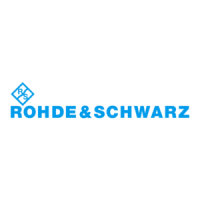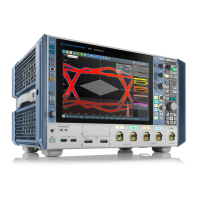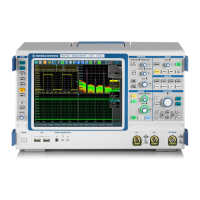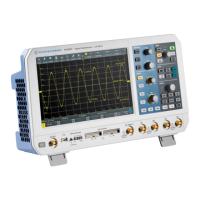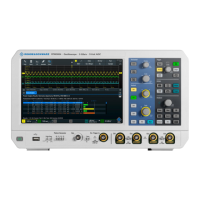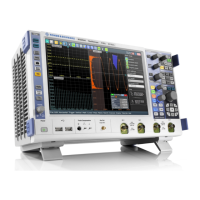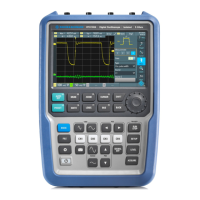Measurements
R&S
®
RTE
369User Manual 1326.1032.02 ─ 20
"Enable"
Displays a description for each detected peak in the spectrum dia-
gram.
"Frame type"
Defines the layout of the labels (full border, underline, or none).
"Invert"
Displays black font on white background using the "Full border" frame
type.
"Max. peak
count"
Defines the maximum number of peaks that are labeled in the dia-
gram. The result table lists all peaks.
"Show Fre-
quency"
Includes the frequency of the detected peak in the diagram labels.
Remote command:
MEASurement<m>:RESult:SHLabels on page 1275
MEASurement<m>:RESult:LABorder on page 1274
MEASurement<m>:RESult:INVerse on page 1274
MEASurement<m>:RESult:MAXCount on page 1273
MEASurement<m>:RESult:SHFRequency on page 1275
8.2.8 Histograms and histogram measurements
8.2.8.1 Histogram characteristics
Histograms are used to plot density of data, i.e. to display graphically how often which
signal values occur. The histogram can be based on the input signal levels (ampli-
tudes) or the timebase in a time domain measurement, or on frequencies or frequency
levels in a spectrum measurement. They are a prerequisite for histogram measure-
ments.
Depending on which data the histogram is based on, a vertical or horizontal histogram
can be selected. A vertical, or amplitude, histogram displays horizontal bars across
amplitude values. A horizontal or time/frequency histogram displays vertical bars over
time/frequencies.
You can define up to 8 histograms in a diagram, one of them is displayed. They can be
created quickly using toolbar icons, or in the "Meas" menu > "Histogram" dialog box. To
switch the histogram display, tap the required histogram area, or select it in the "Histo-
gram" dialog box. For histogram measurements, the measured histogram is selected
independently in the measurement setup.
Automatic measurements
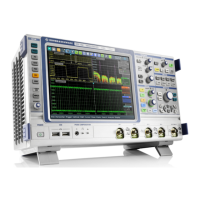
